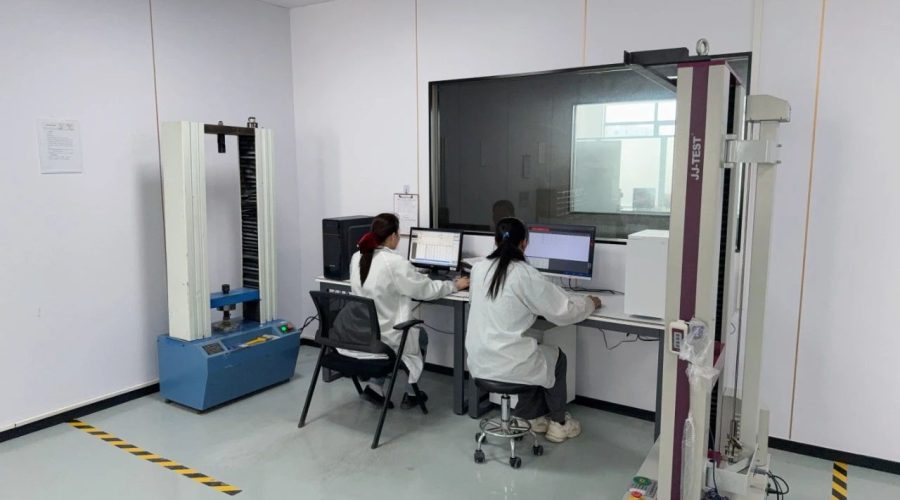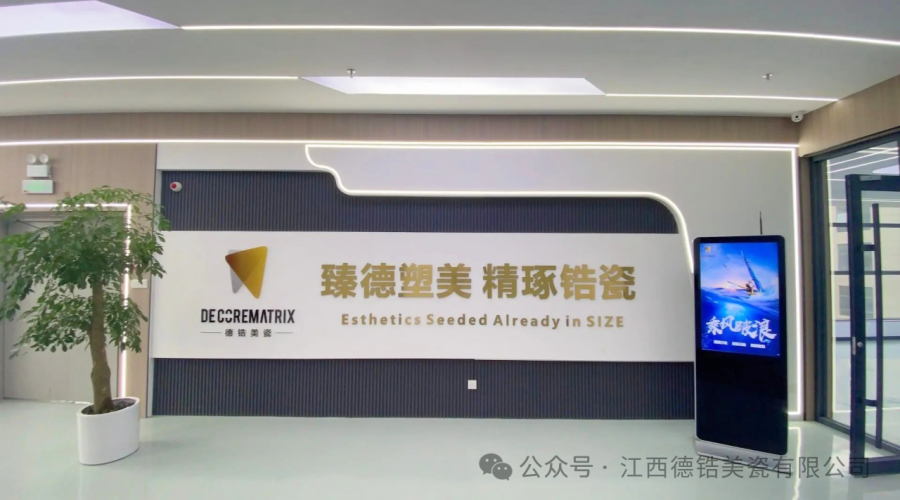As a second-class medical device, zirconia porcelain block is widely used in the field of denture restoration, and its high technical standards and strict quality control are particularly critical.
As a professional enterprise deeply involved in the research and development and production of zirconia ceramic blocks, Decorematrix has always adhered to the development principle of “quality first”, and has been tirelessly exploring the technical innovation and quality optimization of zirconia ceramic blocks for many years. Through multi-dimensional research and strict evaluation, every product is guaranteed to meet high standards and strict production specifications, and its quality is excellent and trustworthy. Next, we will introduce the technical principle, quality requirements and testing methods of zirconia ceramic blocks of Germany, zirconium and America one by one.
1.Chemical Solubility
The chemical solubility of denture restoration materials refers to the property of dissolution or degradation that occurs in specific chemical environments, such as the saliva, food, and microbial environments in the oral cavity. This characteristic directly influences the stability, durability, and biocompatibility of ceramic materials in oral restoration, and it represents an important physical and chemical property of the materials.
For other denture restoration materials, such as feldspathic glass ceramics, resin ceramics, and polymethyl methacrylate (PMMA), due to differences in chemical compositions or material structures, they will undergo varying degrees of chemical dissolution when exposed to acid and alkali stimuli. In contrast, zirconia ceramic materials, as fully sintered ceramic materials, exhibit significantly better stability and chemical stability compared to other denture restoration materials.
| Serial Number | Material Type | Chemical Solubility |
| 1 | Zirconia | ≤ 10 μg/cm² |
| 2 | Glass Ceramics | ≤ 100 μg/cm² |
| 3 | Polymethyl Methacrylate (PMMA) | Dissolution value ≤ 2000 μg/cm² Water absorption value ≤ 40 μg/mm³ |
| 4 | Resin-based Ceramics | Dissolution value ≤ 2000 μg/cm² Water absorption value ≤ 40 μg/mm³ |
Chemical Solubility Test Method:
Sample Preparation, the total surface area of the sample freely exposed to the test solution should be at least 30 cm². Before the test, the sample should be properly polished to simulate the surface polishing in clinical practice.
Clean the sample with grade 3 water conforming to ISO 3696. Dry the sample at (150 ± 5) °C for 4 hours and weigh it accurately to 0.1 mg. Calculate the total surface area of the sample accurately to 0.1 cm². Take a 250 mL heat-resistant glass container containing 100 mL of an acetic acid (analytical pure) solution with a concentration of 4% (volume fraction) prepared with grade 3 water conforming to ISO 3696 (see 7.6.1). Preheat it to (80 ± 3) °C, place the sample in the container, immediately cover the container tightly, and put it into an oven at (80 ± 3) °C for 16 hours. Clean the sample with grade 3 water conforming to ISO 3696, dry it to a constant weight in an oven at (150 ± 5) °C, and weigh the sample again. Calculate the mass loss of the sample, with the unit of μg/cm².
2.Radioactivity
According to the requirements of GB/T 30367-2013, the activity concentration of uranium-238 in the zirconia ceramic block should not be greater than 1.0 Bq/g. Grind it into powder using tungsten carbide grinding media or other suitable grinding media (to avoid contamination by radioactive substances), and sieve to obtain 50 g of powder with a particle size less than 75 μm. Take 50 g of the zirconia powder sample and determine the radioactive activity concentration of uranium-238 by neutron activation method or γ-ray spectrometry (when using the spectrometry technology, interference should be excluded).
3.Linear ExpansionCoefficient
Almost all materials exhibit the phenomenon of expansion upon heating and contraction upon cooling. The coefficient of thermal expansion is a physical quantity that describes the change in the length or volume of an object with temperature. When the change in length is used to represent the coefficient of thermal expansion, it is called the linear expansion coefficient, which is the ratio of the change in length of a solid substance when the temperature changes by 1℃ to its length at 0℃.
Test method for the linear expansion coefficient:
Prepare four columnar or rod-shaped specimens with a length of 5 mm – 50 mm and a cross-sectional area not exceeding 30 mm². Two of the specimens are sintered once under vacuum and then once in air at atmospheric pressure. The other two specimens are sintered three times in vacuum and then once in air at atmospheric pressure. Polish the two ends of the specimen to make them parallel to each other and perpendicular to the long axis of the specimen. Place each specimen in the furnace cavity of the thermal expansion instrument at room temperature and wait for 15 minutes to make the temperature of the specimen the same as that of the thermal expansion instrument. Set the “preload” value of the specimen according to the regulations of the thermal expansion instrument manufacturer for ceramic measurement. Conduct a thermal expansion measurement on the specimen. Starting from 25℃, heat the thermal expansion instrument at a heating rate of 5℃/min – 10℃/min to 500℃. Determine the linear expansion coefficient of each sample between 25℃ and 500℃ from the mapping curve or recorded values indicating the corresponding relationship between expansion and temperature.
The linear expansion coefficient is an important performance indicator. The linear expansion coefficient of zirconia ceramic blocks is approximately 10 – 12×10⁻⁶·K⁻¹.
When using zirconia ceramic blocks to make dentures, whether it is the inner crown, the cutback crown, or the implant denture bridge, porcelain powder and glaze paste are required. Moreover, in the popular implant restoration for edentulous jaws in recent years, a large amount of gingival-colored glaze paste is needed for the zirconia implant denture bridge. Since the chemical composition of porcelain powder and glaze paste is mainly feldspathic glass or leucite-reinforced vitreous materials. When selecting porcelain powder and glaze paste, the porcelain powder and glaze paste for zirconia restorations (with a linear expansion coefficient of approximately 9 – 11×10⁻⁶·K⁻¹) should be selected. Therefore, during the process of making denture restorations with zirconia, if the linear expansion coefficients of the porcelain powder/glaze paste and the base material do not match, cracks and peeling are likely to occur during the high-temperature porcelain firing process.
4.Sintering Density
The sintering density of zirconia ceramic blocks is a very important physical and chemical performance indicator. According to the requirements of the “Technical Review Guidelines for Zirconia Ceramic Blocks for All-Ceramic Dentures”, the sintering density of zirconia ceramic blocks should not be less than 6.0 g/cm³.
The test method for the sintering density of zirconia is the Archimedes’ water displacement method. The test steps are as follows:
(1) Measure the dry weight: Wash the sintered specimen with pure water, dry it in an oven at 100 ± 5℃ for 2 hours until it reaches a constant weight, cool it down and weigh its weight in air, and record it as M₁.
(2) Measure the buoyant weight: Boil the specimen for 1.5 – 2 hours, cool it down and place it in water in a container with an overflow pipe (the water in the container should be filled before each weighing). When the specimen is completely submerged in water, hang the specimen on the hook of the balance and weigh it, and record it as M₂.
(3) Measure the wet weight: Wipe off the excess water droplets on the surface of the specimen with a water-saturated wet cloth (be careful not to suck out the water in the pores), and quickly weigh its weight in air, and record it as M₃.

M₁——The weight of the dried specimen in air;
M₂——The weight of the wet specimen in water;
M₃——The weight of the wet specimen in air;
ρ_water——The density of water.
5.Flexural Strength
Flexural strength is one of the most important physical and chemical performance indicators of denture restoration materials. Compared with other denture restoration materials, zirconia, due to its ultra-high flexural strength, can ensure the long-term safety and stability of the restoration when it is subjected to masticatory forces in the patient’s mouth. In addition, only zirconia materials can be used to fabricate denture restorations with four or more units.
| Serial Number | Material Type | Flexural Strength |
|---|---|---|
| 1 | Zirconia | ≥800MPa |
| 2 | Feldspathic Porcelain | ≤50MPa |
| 3 | Resin-based Ceramics | ≥150MPa |
| 4 | Leucite-reinforced Glass Ceramics | ≤150MPa |
| 5 | Dicalcium Silicate-reinforced Glass Ceramics | ≤400MPa |
| 6 | Polymethyl Methacrylate (PMMA) | ≤100MPa |
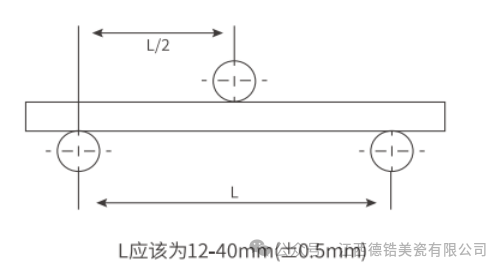
The diameter of the two supporting cylinders is 1.5 mm – 5 mm (±0.2 mm), and the span between the centers of the two is 16 mm – 40 mm (±0.5 mm). The cylinders are made of hard steel or other materials with a hardness greater than 40 HRC (Rockwell hardness), and the surface is smooth with a roughness Ra of less than 0.5 μm.
(2) Specimen Preparation
A. Dimensions
The cross-section of the specimen used for the three-point bending test is rectangular, and it is best to chamfer the sharp edges, as required by the dimensions in the figure.
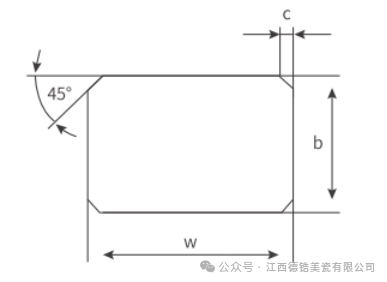
Explanation:
Width: w = 4.0 mm ± 0.2 mm (side length dimension perpendicular to the load direction);
Thickness: b = 1.2 mm – 3.0 mm ± 0.2 mm (3.0 mm is recommended, side length dimension parallel to the load direction);
Chamfer: c = 0.09 mm – 0.15 mm.
B. Test Parameters
Prepare at least 10 specimens according to the above dimension requirements, and 30 specimens are preferably prepared. Grind each specimen to obtain a rectangular specimen that meets the dimension requirements. Conduct the final grinding on a diamond medium with a nominal particle size of 30 μm – 40 μm, and conduct the final polishing with a diamond abrasive of 15 μm – 20 μm to ensure that the two opposite surfaces of the specimen are flat, and the parallelism error is less than 0.05 mm. Thoroughly clean the specimen to ensure that all grinding debris is removed.
(3) Calculation Formula
Calculate the flexural strength using the following formula, with the unit of megapascal (MPa).
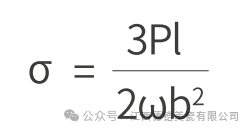
In the formula:
σ represents the flexural strength, with the unit of MPa;
P represents the fracture load, with the unit of N;
ℓ represents the test span, with the unit of mm;
w represents the width of the specimen, with the unit of mm;
b represents the thickness of the specimen, with the unit of mm.
